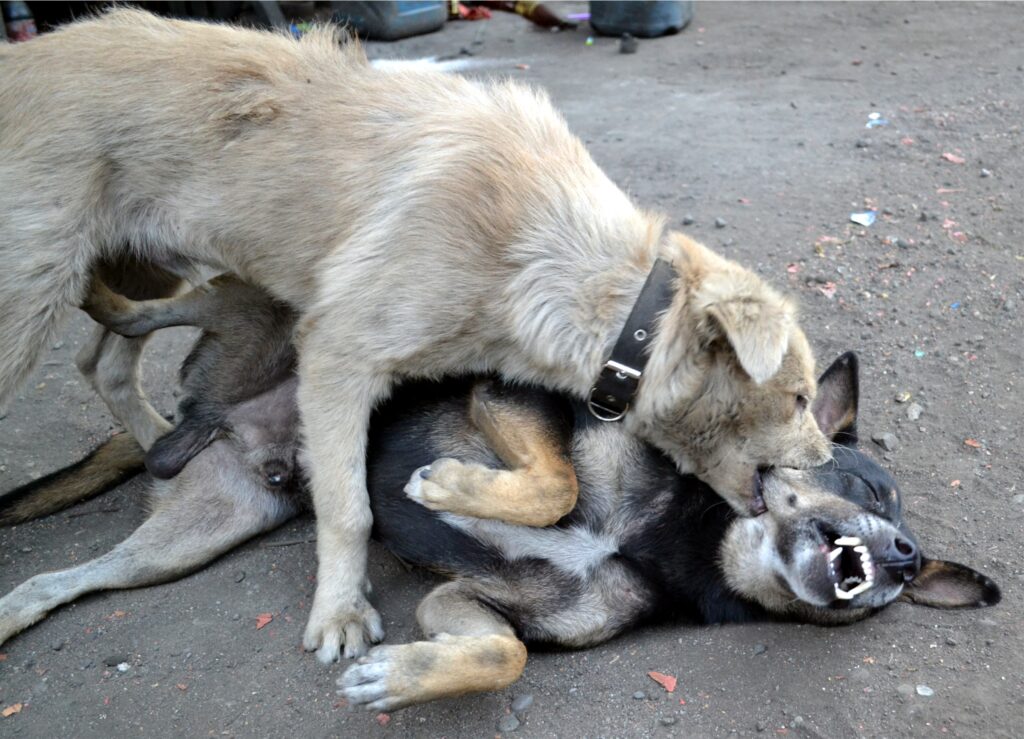Written by Henrylito D. Tacio

Despite the campaign of the Department of Health (DOH) to vaccinate all dogs in the country, rabies remains to be a public health problem.
“Rabies continues to be a prevalent public health threat in the Philippines,” deplores Research Institute for Tropical Medicine (RITM) in its website. “The Philippines ranks among the highest in the world in terms of rabies prevalence.”
Around 200 to 300 Filipinos die of rabies every year, data from the Department of Health (DOH) shows. “The government aims to bring these figures down to zero,” RITM says.
So much so that in 2007, the government passed the Anti-Rabies Act (Republic Act No. 9482), a law that calls for the control and elimination of human and animal rabies. It led to the creation of the National Rabies Prevention and Control Program (NRPCP), which targets to eliminate human rabies by 2016 and declare a rabies-free Philippines by 2020.
Since the launch of NRPCP, the number of deaths due to rabies has slowly dropped. From 257 deaths in 2010, it went down to 187 in 2013. The number of human rabies cases also dropped by 27% from 2010 to 2013.
Most of those who died of e victims came from the following regions: Calabarzon (composed of Cavite, Laguna, Batangas, Rizal and Quezon), Cagayan Valley, Socskargen (South Cotabato, Sultan Kudarat, Sarangani, and General Santos), and Davao.
The Global Alliance for Rabies Control considers rabies as the “deadliest disease on Earth.” It claims a person’s life every 10 minutes, according to the United States Centers for Disease Control and Prevention (CDC).
Most death incidents happen in Asia and Africa with children comprising more than half of the deaths. “At least one-third of deaths due to human rabies are among children less than 15 years old,” reports the Geneva-based World Health Organization (WHO). “Almost half of rabies exposure is among school children.”
The rabies problem is as old as mankind, dating back in written records to the Romans, Greeks, and Egyptians. The term “rabies,” however, came from the Sanskrit word rabhas, which means “to do violence.”
At one time, the disease was called hydrophobia (from the Greek words hydro for “water” and phobos for “fear”). The patient is extremely thirsty but experiences spasms of the larynx when water is presented or even mentioned.
“Rabies is a viral disease that attacks the central nervous system,” RITM explains. “It is transmitted to a person through a bite of an infected animal. All warm-blooded animals may carry the rabies virus.”
The main carriers of the virus are bats. Aside from dogs and cats, the virus is also carried by cattle, horses, swine, goats, rabbits, and monkeys. Human beings are also carriers once they are bitten by rabid animals. It is “extremely rare” in squirrels, rats, and mice.
“(The rabies virus) can be transmitted when infectious material, usually saliva, comes into direct contact with a victim’s fresh skin lesions,” the health department says. “Rabies may also occur, though in very rare cases, through inhalation of virus-containing spray or through organ transplants.”
Dr. Maricelle Licuanan Resurrection, founder of the Philippine Pet Control Center, told Philippine Daily Inquirer: “The virus incubation is normally from 20 to 60 days, depending on the size of the bite. If the bite is near the brain, like on the arm, then it’s around five days.”

The RITM warns, “Once a person is bitten by a rabid animal and the victim was not vaccinated, the rabies virus will travel from the site of the bite to the victim’s brain. As it reaches the human nervous system, it becomes 100% fatal.”
Health experts say rabies develops with three main phases: the early period followed by excitation phase and finally coma. During the early period, the symptoms are mild and non-specific. They include: a slight fever, chills, uneasiness, headache, loss of appetite, vomiting, sore throat, abnormal reaction to light, and a persistent loose cough. A specific early symptom is local or radiating pain, burning, or itching, a sensation of cold, and/or tingling at the inoculation bite.
During the excitation phase, patients experience nervousness, anxiety, agitation, marked restlessness, apprehension, irritability, sensitivity to loud noises, fear of water, excessive salivation (one to one-and-a-half liters in 24 hours), secretion of tears, and perspiration. Systemic symptoms are severe, and they include: heart beating greater than 100 beats per minute, cyclic respirations, urinary retention, and a higher temperature.
Death is inevitable once the symptoms appear. This is the reason why if you think you are bitten by a rabid animal, “you must get a series of shots to prevent the infection from taking hold,” the Mayo Clinic suggests.
But before doing so, you must know if the animal really has rabies. But if you can’t find the animal, “it may be safest to assume that the animal has rabies.” However, some factors should be considered like the type of animal and the situation in which the bite occurred.
“Anyone who has been bitten by an animal, or who otherwise may have been exposed to rabies, should clean the wound and see a doctor immediately,” CDC points out. “The doctor will determine if they need to be vaccinated.”
A person who is exposed and has never been vaccinated against rabies should get 4 doses of rabies vaccine: one dose right away, and additional doses on the third, seventh and fourteenth days. “They should also get another shot called rabies immune globulin at the same time as the first dose,” CDC says.

But like any medicine, a vaccine is capable of causing serious problems, such as severe allergic reactions. “The risk of a vaccine causing serious harm, or death, is extremely small,” the CDC claims. “Serious problems from rabies vaccine are very rare.”
Among the mild problems are: soreness, redness, and swelling or itching where the shot was given (30%-74%) and headache, nausea, abdominal pain, muscle aches, and dizziness (5%-40%).
Moderate problems include hives, pain in the joints and fever (about 6% of booster doses).
Among the severe allergic reactions may include hives, swelling of the face and throat, difficulty breathing, a fast heartbeat, dizziness and weakness. These would start a few minutes to a few hours after the vaccination. If this happens, bring the person to the nearest hospital. Otherwise, call your doctor.
Instead of 2020, the health department is now eyeing 2022 as the year the country will be rabies-free.
“Prevention is key in eliminating the rabies disease,” Health Secretary Francisco H. Duque III said in a statement. “Ninety-nine percent of all rabies transmissions to humans are from dogs. Be a responsible pet owner and vaccinate your pets. This is the most cost-effective strategy to prevent rabies.”

